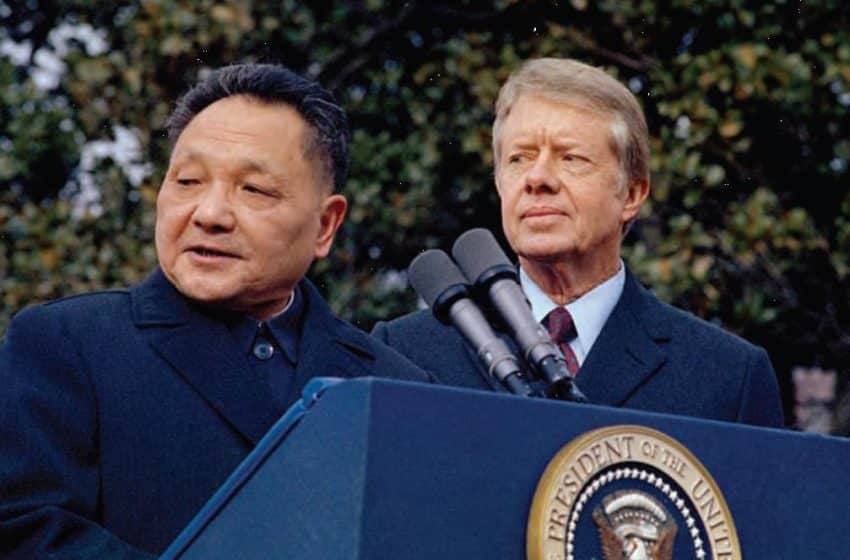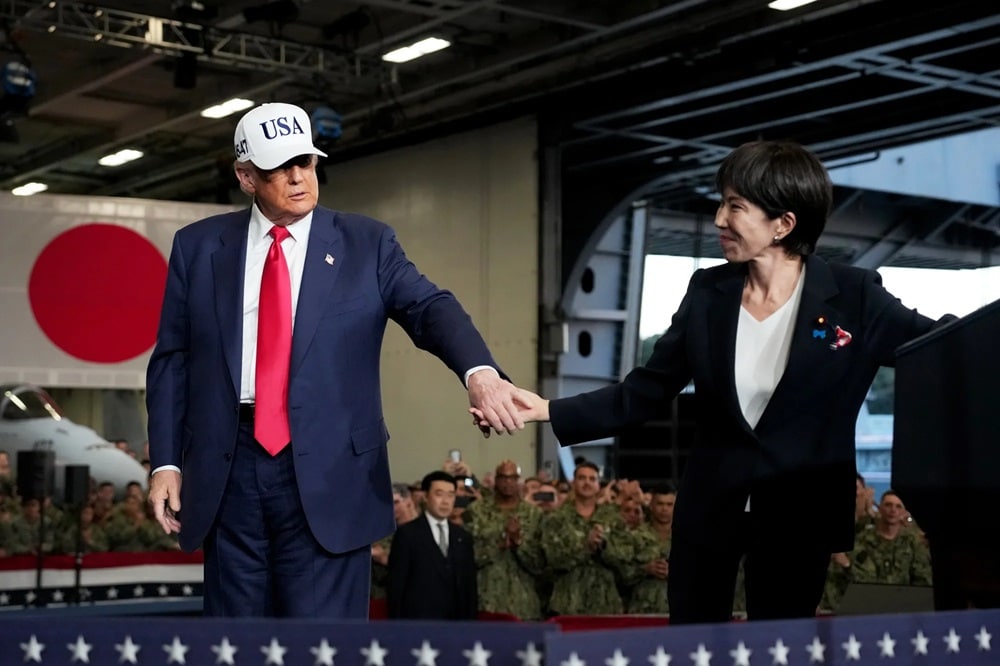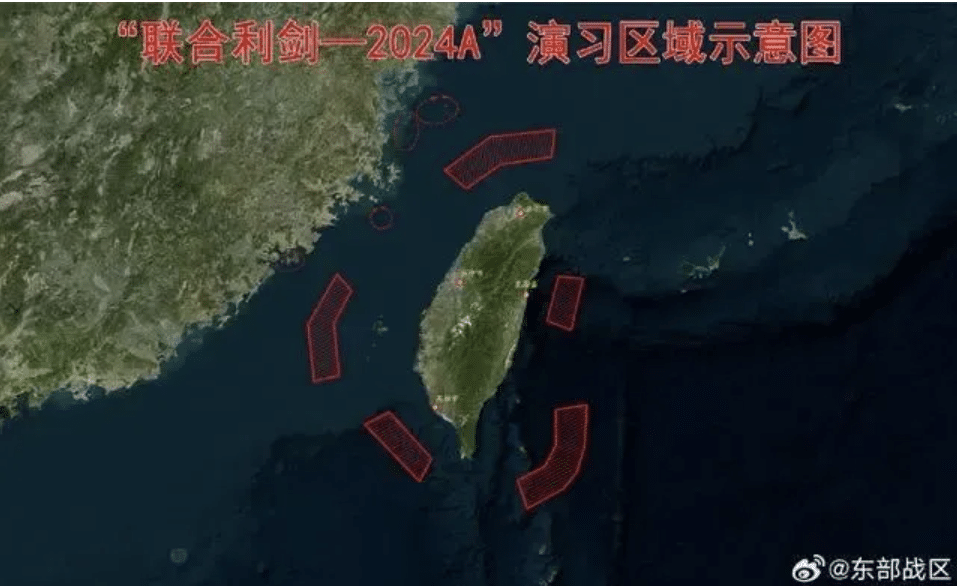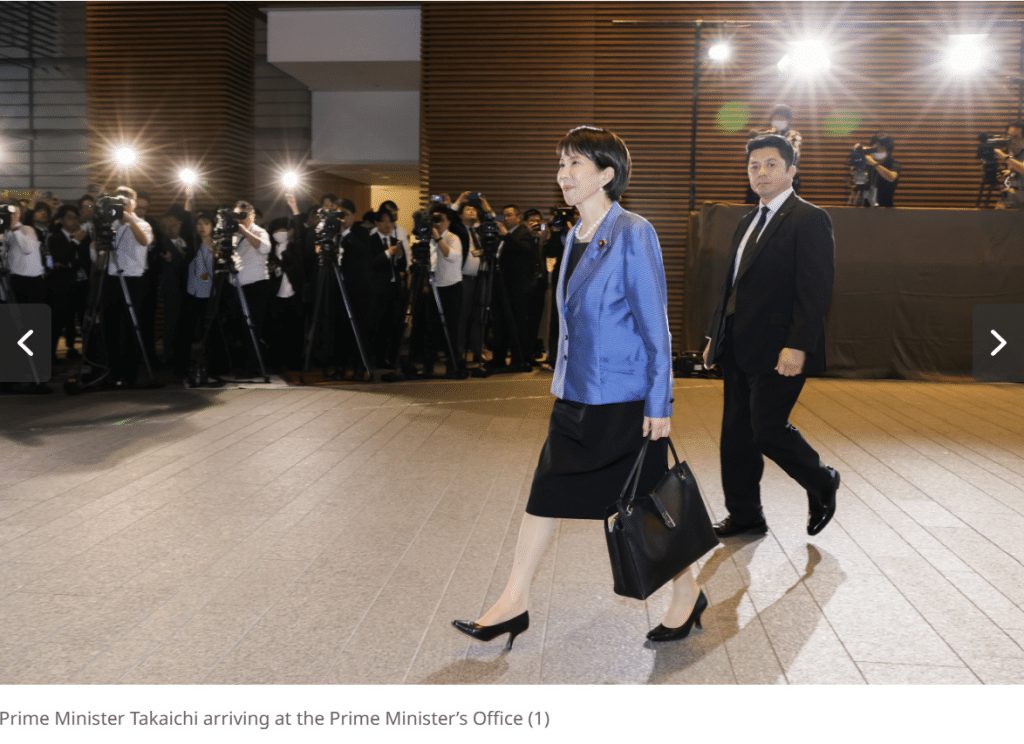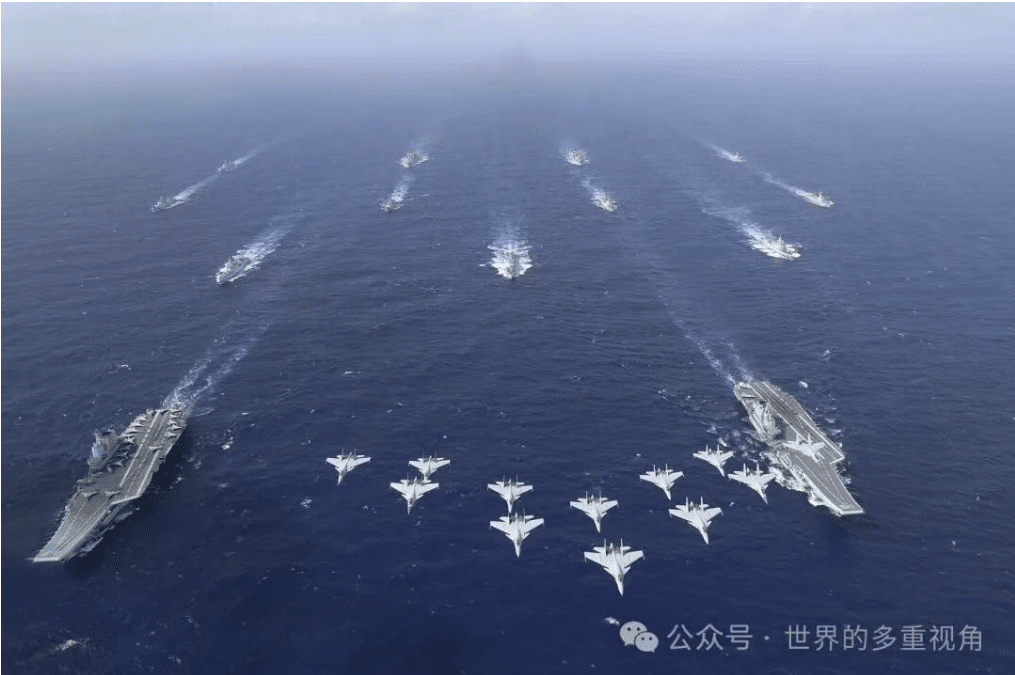Kingdom in the Middle: China as an International Mediator
- Analysis
 Payton Morlock
Payton Morlock- 08/15/2024
- 0
Payton Morlock is a runner-up for this year’s 1990 Institute Prize for the China Focus Essay Contest jointly hosted by China Focus at The Carter Center, Fudan-UC Center on Contemporary China, the 1990 Institute, The Carter Center, and the 21st Century China Center. Morlock will receive $500 as a cash prize as well as the publication of his essay on the U.S.-China Perception Monitor.
Contest participants had a choice between two prompts. Morlock chose to address Topic 1: China has positioned itself as a potential mediator in conflicts like the Russo-Ukrainian War and the conflicts in the Middle-East. How would you define China’s track record in its mediation? Evaluate Chinese success so far and the geopolitical implications and potential obstacles surrounding China’s newfound role as an international mediator.
Introduction
China has long maintained an image of a non-interventionist state. Despite its global clout and rising power, China has adopted neutrality in a wide variety of situations. That could have started to change. As China seeks to expand its power and pursue its core interests, China will take on the task of becoming an international mediator. The crucial moment for China was the Saudi-Iran Deal, which has transformed how many are viewing China’s role in the international community. How did the Middle Kingdom end up in the middle? China has a complex history as a conciliatory actor, but as its economic interests move abroad, it seeks to create stability around the globe.
For the Record
Before its pivotal moment with the Saudi-Iran Deal, China’s forays into international mediation were less pronounced and more strategically selective, largely mirroring its national interests. Traditionally, China’s diplomatic philosophy has revolved around non-interference, a stance that, while contributing to its image as a neutral party, often kept it from taking robust mediatory roles that could entangle it in the internal conflicts of other nations. This approach, rooted in the doctrine of peaceful coexistence, has been both a shield and a strategy as China navigated its rise to global prominence without provoking direct confrontations with other superpowers.
In instances where China did step into the role of mediator, its efforts were mostly concentrated in its immediate sphere of influence—Asia and Africa. Notably, it played a significant part in the Six-Party Talks aimed at denuclearizing North Korea, showcasing its capability to engage in complex security dialogues. In Africa, where China’s economic stakes are massive, it has engaged more directly in mediation, particularly in countries like Sudan, helping to broker talks that aimed to stabilize regions critical to its Belt and Road Initiative. These mediations tended to prioritize economic stability.
The Six-Party Talks were launched in 2003, inviting to the table China, the United States, North Korea, South Korea, Japan, and Russia. Talks took place in the hope of getting North Korea, the newly nuclearized nation, to adhere to international nuclear standards. China has maintained allyship with North Korea despite the country isolating itself from much of the rest of the world. It relies primarily on China for imports and aid. Beijing initially leveraged this partnership with North Korea to get the nation to the negotiating table. The talks reached a stalemate in 2009, but China, since 2013, has been pushing to relaunch the talks. This demonstrates greater cooperation and willingness to act as an international mediator.
China’s diplomatic engagements in Africa in the past also tell a tale of strategic depth and economic calculus. Traditionally viewed as a distant player in African politics, China shifted towards a more hands-on approach as its investments on the continent ballooned. In Sudan and South Sudan, where oil fields and infrastructure projects align with the expansive Belt and Road Initiative, China took on a mediator’s mantle. Here, it sought not just to quell conflicts but to secure a stable environment for its economic ventures. This role, while pivotal in reducing immediate tensions, often prioritized the continuity of commerce over the complexities of political reconciliation. Critics argue that China’s mediation has been more about protecting its assets and less about crafting lasting peace, reflecting a broader pattern where commercial interests drive its diplomatic strategies.
Winds of Change
The pattern of China’s non-interventionism broke as Xi Jinping came to power. China’s onslaught into international mediation notably increased with the introduction of the Belt and Road Initiative. There are several underlying reasons for the shift, including a change in diplomatic policy and a shift in economic drivers.
Russia’s invasion of Ukraine violated China’s non-interference policy, as Russia was not only invading the country but also attempting to manipulate domestic politics. China, explicitly, cannot justify this action. However, due to China and Russia’s “No Limits Partnership,” Beijing had to sit back and let Moscow act, not denouncing the levying of war publicly. China’s course of action was to call for peace from both the Ukrainian and Russian sides. Beijing is the last remaining global power that has amicable connections with Moscow, and pressure in any form from Beijing could aid in putting an end to the war. China also has massive economic leverage over Russia as the largest consumer of its oil and gas exports. The policy change may be surprising, but acting as a peacemaker has benefits. By posing itself as a force for global peace, other countries—and in the case of the Russo-Ukrainian War, Western European countries—would be prompted to engage with China. Through this engagement, China can improve ties with these countries, whether it be economic or political, and in turn, gain leverage.
The motivation for change certainly goes beyond the image of altruism. Where there are commercial interests, China is likely to mediate conflict. The Belt and Road Initiative has only increased this drive for creating safe environments to invest and do business abroad. This strategic shift, while enhancing its global stature, underscores a pragmatic alignment of diplomacy with economic imperatives. As China ascends to unparalleled economic heights, its investments across continents—from the sprawling infrastructures of Africa to the critical sea lanes of Southeast Asia—have grown exponentially. This vast economic footprint necessitates a stable international environment to safeguard its interests, compelling Beijing to adopt a more hands-on approach in global conflicts where its commercial stakes are high.
The transformation of China from a passive observer to a proactive mediator is not merely a bid for diplomatic goodwill but a calculated move to protect its global supply chains and investment ventures. By intervening in regional disputes and conflicts, China aims to secure the operational stability of its Belt and Road Initiative, as multiple trillions of dollars have already been invested in infrastructure spanning several continents. Furthermore, the Belt and Road Initiative is crucial to its long-term economic strategy, some even argue part of a grand strategy for China. This is especially apparent in regions like the Middle East and Africa. Its role in mediating the Saudi-Iran deal, for example, not only showcases its diplomatic capabilities but also protects its oil supplies and creates a more predictable regional security landscape.
Critically, this shift also allows China to project its influence in regions traditionally dominated by Western powers, positioning itself as a viable alternative to conflict resolution processes led by the United States.
Success
In mid-2023, China successfully mediated a deal between Saudi Arabia and Iran. This came after nearly a decade of tension between the countries. China has considerable economic interests in the Middle East, specifically in the Gulf. As the Gulf could help fulfill its energy needs, China needed to become the countries’ primary bilateral trade partners. Beijing funneled numerous investments into the Gulf. Simultaneously, Xi Jinping worked to paint China as a defender of sovereignty—in line with its non-inference policy. This bid to court both Iran and Saudi Arabia was successful, as the countries were likely attracted to the idea of conducting internal affairs without external influence. The Saudi-Iran Deal was solidified as a trilateral deal, achieving peaceful relations for the time being.
A particular case study of success has been China’s mediation in Mali. Chinese peacekeepers operate in Mali, which is under the control of the United Nations. Notably, following the Cold War, peacekeeping missions lost their military focus and veered into development. China’s peacekeeping presence in Mali has been as such—centered on development and stability. This union of development and stability has been at the forefront of China’s agenda in Africa. China has successfully helped Mali maintain its sovereignty and integrity through mediation.
The two examples markedly create a template for what China’s general strategy is for successful mediation. China emphasizes the importance of territorial sovereignty and non-interference, even when engaging in mediation. Mediation focuses on the development of economically viable regions to support commercial interests.
Obstacles in the Road
China’s approach to international mediation is hampered by its entrenched government-to-government modality, which constrains its diplomatic flexibility and effectiveness. This rigid framework restricts Beijing from engaging with a broader spectrum of stakeholders, such as non-governmental organizations, private institutions, and civil society, which are often crucial for conflict resolution in these regions. This limitation was starkly evident in China’s dealings on the global stage, where its state-centric diplomacy sometimes overlooks or undervalues the grassroots nuances and local realities of conflicts. Consequently, China’s efforts, while grand in declaration, frequently fall short of fostering sustainable resolutions, reflecting a gap between diplomatic intention and impact.
In some cases, an obstacle for China is its preference for bilateral modalities, casting aside multilateral solutions, which can be more effective for diplomacy. Bilateral frameworks likely give more leverage to China. Operating under this assumption, China benefits from being the only other one sitting at the table. However, mediation tends to require all groups to sit at the table.
Yet another obstacle is the inefficient approach that China takes in mediation. Due to the non-interference principle, China creates an environment to facilitate mediation, but does not push either side to resolve issues. China’s inefficiency in international mediation, particularly evident during the Russo-Ukrainian War, underscores the limitations of its approach. By prioritizing equal relations and avoiding deep involvement in the internal affairs of nations, China’s diplomacy often lacks the leverage necessary to effect substantive conflict resolution. In the case of Ukraine, while Beijing positioned itself as a neutral party offering to mediate, its hands-off stance and close ties with Russia meant it could not exert meaningful pressure or propose viable solutions. Although China had the power to pressure Russia, it could not, resulting in diplomatic ineffectiveness on a contentious issue.
Lastly, inconsistent expectations between parties create another obstacle for China in fulfilling its role as an international mediator. An example is the Israel-Palestine conflict, where it struggles to reconcile the inconsistent expectations of both parties. Despite Beijing stepping outside its typical neutral rhetoric and demonstrating support for Palestine, the two parties have vastly different goals. Israel seeks unwavering support against Hamas, no matter the actions taken, while the Palestinians demand an end to the occupation. China, while decisive in its position, is unable to bridge this entrenched divide as the two groups are firm in their demands.
Conclusion
China’s track record of international mediation was rather weak, as it upheld the non-interference principle and maintained neutrality. Following Xi Jinping’s coming to power, Beijing began to engage more in international mediation. With the advent of the Belt and Road Initiative, mediation was now a way to exert influence and power. This influence and power came through channeling China’s economic interests and improving diplomatic relations. Many would argue that a turning point for China as a mediator was the Saudi-Iran Deal, positioning China as a peacemaker. This deal aligned with China’s commercial interests. China has been successful as a mediator in various situations, with a multilateral example being the Saudi-Iran Deal, and a bilateral example being its interventions in Mali.
Beijing is attractive to many countries as a mediator because of its dedication to preserving sovereignty. However, there are some obstacles in the way of China acting as a mediator. China tends to be inefficient as a mediator. Rather than engaging with private institutions or NGOs, the Chinese government generally only interacts with other governments when mediating, ignoring whole segments of stakeholders. There is also a preference for bilateral mediation, rather than multilateral mediation, which benefits China but is inefficient. The horizontal approach taken to international mediation aligns with China’s non-interference principle, but again, creates inefficiencies and can make China ineffective at times. And although not related to China’s inefficiency in mediation, the obstacle of inconsistent expectations between parties exists. With the weaknesses that exist in current international mediation for Beijing, the latter obstacle becomes a greater challenge.
Payton Morlock is a student at the University of California, San Diego.
The views expressed in this article represent those of the author(s) and not those of The Carter Center.
Author
-

Payton Morlock is a student at the University of California, San Diego.

